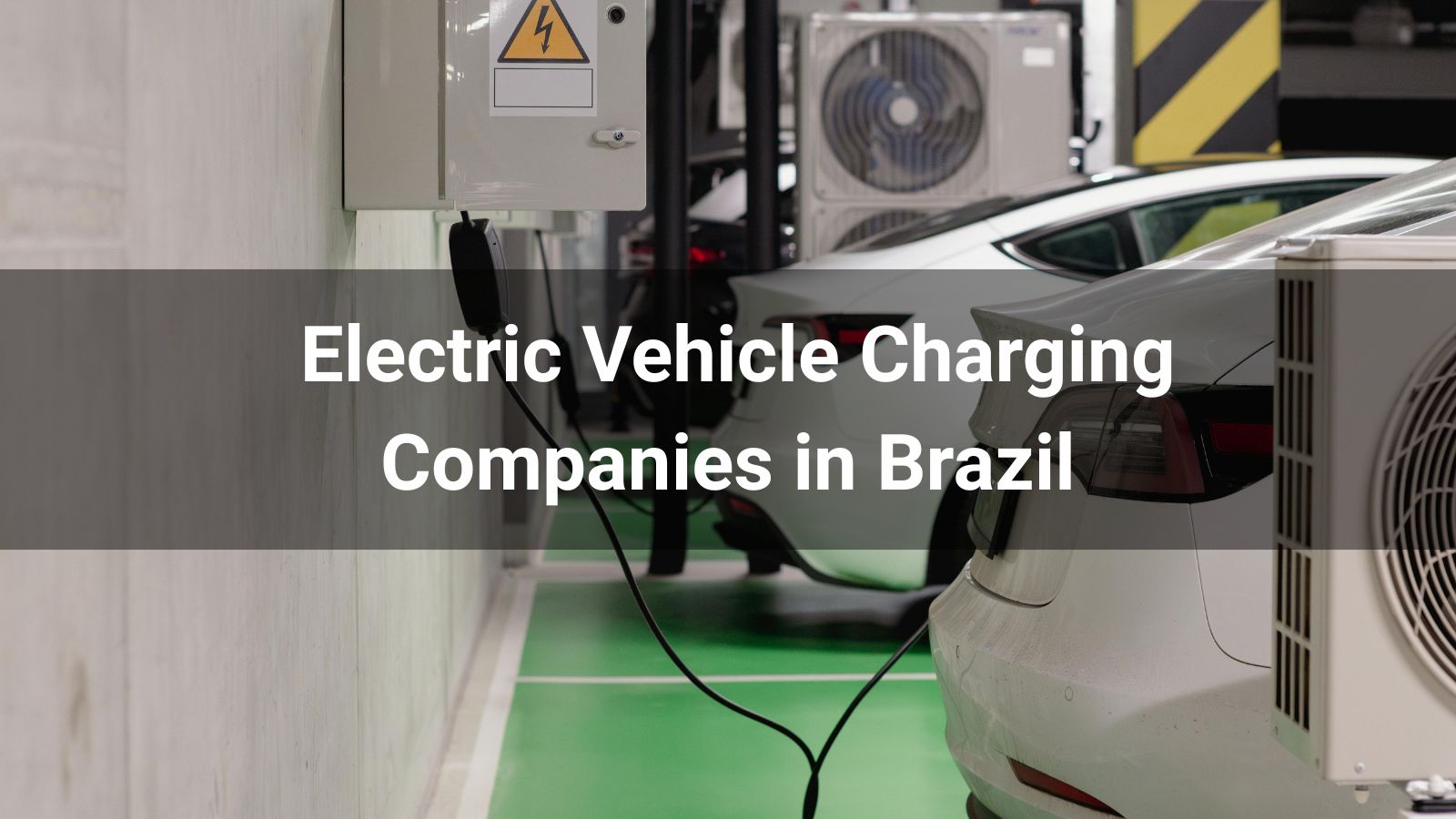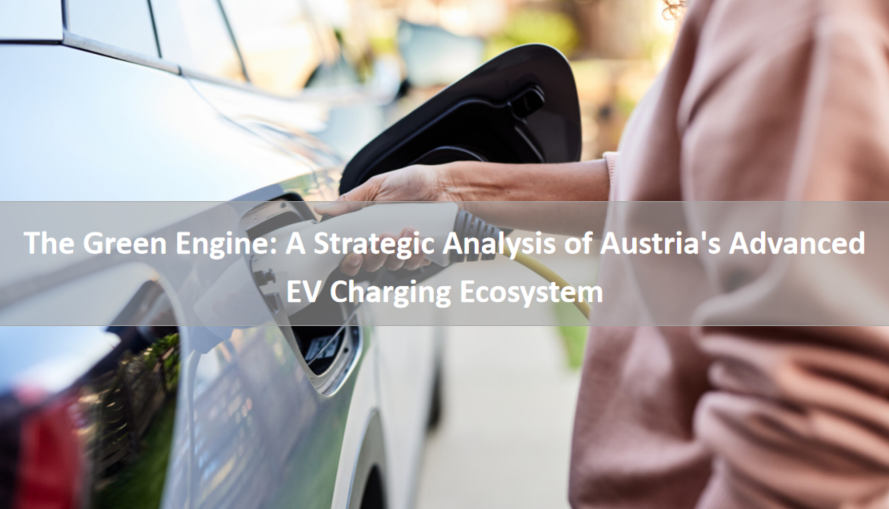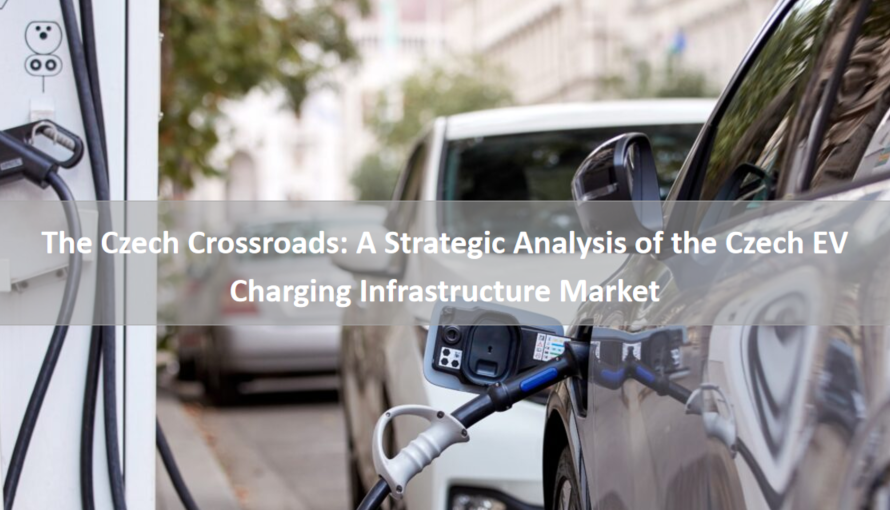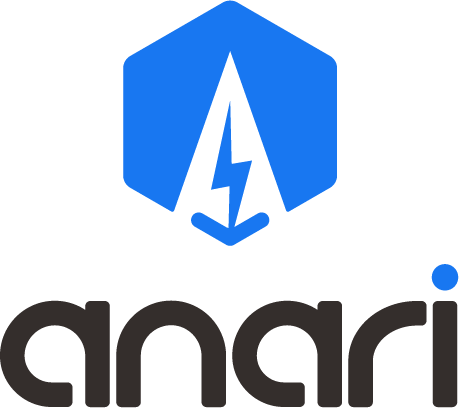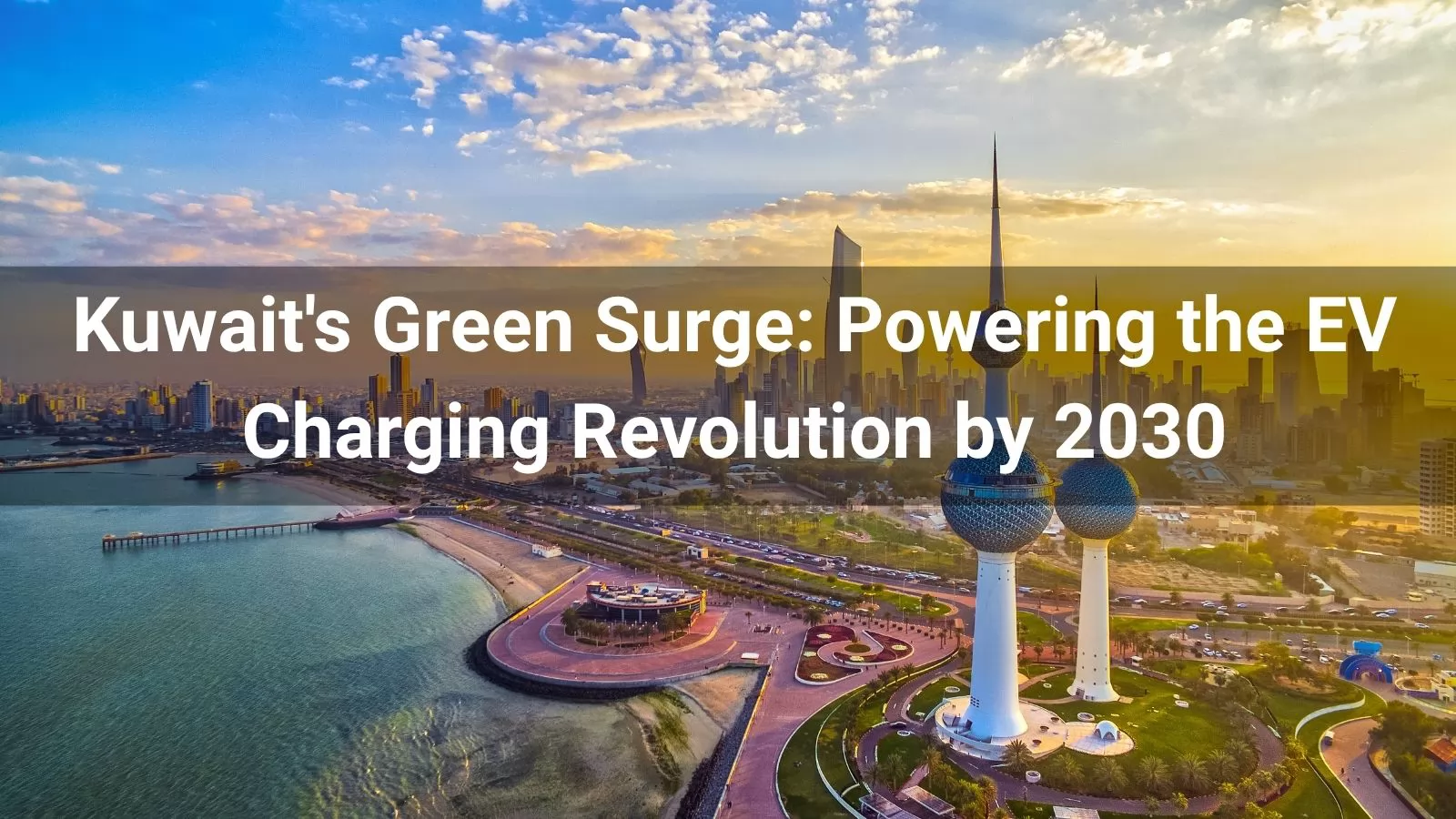
Executive Summary
Kuwait is making strides toward establishing an electric vehicle (EV) charging infrastructure, driven by its Vision 2035 sustainability goals and increasing private-sector investment despite a historically oil-dependent economy. This report analyzes the national policies, market size, development status, opportunities, and challenges of EV charging stations in Kuwait within a rigorous framework. National policies, including tax exemptions and renewable energy initiatives, aim to support EV adoption but lack a comprehensive e-mobility strategy. The EV market, though nascent, is projected to grow from USD 0.07 billion in 2025 to USD 0.40 billion by 2030 at a CAGR of 41.6%, fueling demand for charging infrastructure. Development is progressing with approximately 365 public charging stations, primarily in urban centers like Kuwait City, supported by private entities like Alghanim and Charged General Trading Co. Opportunities lie in leveraging Kuwait’s wealth, renewable energy potential, and strategic trade position, while challenges include high electricity costs, regulatory gaps, and consumer hesitancy. Strategic recommendations focus on accelerating infrastructure deployment, finalizing regulations, and integrating renewables to position Kuwait as a regional EV hub.
1. National Policies
Kuwait’s national policies for EV charging infrastructure are developing, with tax exemptions and renewable energy plans under Vision 2035 providing a foundation. However, the absence of a dedicated e-mobility strategy and limited government support hinder large-scale implementation.
Kuwait’s policy framework aligns with its Vision 2035 to diversify from oil dependency and reduce greenhouse gas emissions, but EV-specific policies remain underdeveloped. Key policy elements include:
1. Tax Incentives and Financial Support
-
The government offers reduced import duties and VAT exemptions for EVs, lowering acquisition costs by up to 20% compared to internal combustion engine vehicles. These measures, introduced in 2022, mirror Jordan’s tax exemptions but are less comprehensive.
-
Limited subsidies exist for charging station installations, with private companies like Alghanim leading infrastructure efforts due to minimal public funding. This contrasts with Morocco’s JREEEF-backed subsidies.
2. Vision 2035 and Renewable Energy Initiatives
-
Kuwait’s Vision 2035 emphasizes sustainable development, targeting 15% renewable energy by 2030. Projects like the 1.5 GW Shagaya Renewable Energy Complex (solar and wind) provide a foundation for green charging hubs, aligning with global trends in Côte d’Ivoire.
-
The absence of a formal e-mobility policy, unlike Kenya’s draft framework, limits coordinated infrastructure development, with reliance on private initiatives.
3. Infrastructure Planning and AHP-GIS Integration
-
Kuwait is exploring Analytical Hierarchy Process (AHP) and Geographic Information System (GIS) integration to optimize EV charging station (EVCS) distribution, focusing on urban centers, petrol stations, and off-road parking. This data-driven approach, highlighted in research, aims to enhance efficiency but is still in early stages.
-
The Ministry of Electricity and Water (MEW) supports Level 1–3 charging modes, but implementation lags due to bureaucratic delays.
4. Regulatory Framework Gaps
-
The lack of standardized charging protocols, such as OCPP or connector types (CCS2, CHAdeMO, NACS/J3400), creates uncertainty for investors, similar to challenges in Tanzania.
-
Limited government prioritization, as noted in posts on X, leaves infrastructure development to private companies like Alghanim, reducing public-sector coordination.
2. Market Size
Kuwait’s EV market is small but poised for rapid growth, projected to increase from USD 0.07 billion in 2025 to USD 0.40 billion by 2030 at a CAGR of 41.6%, driving demand for charging infrastructure. The charging station market, though emerging, is expanding to meet urban demand.
1. EV Market Growth
-
Kuwait’s EV market is estimated at 1,000 vehicles in 2025, primarily light-duty EVs like the Chevrolet Bolt, with sales of only 88 EVs reported in 2021. By 2030, this is projected to reach 10,000 vehicles, driven by tax incentives and rising fuel costs. The CAGR of 41.6% exceeds Jordan’s 34.2%.
-
Over 50% of drivers express positive attitudes toward EVs, indicating potential for growth despite low current adoption.
2. Charging Infrastructure Market
-
As of 2025, Kuwait has approximately 365 public charging stations, primarily AC chargers in urban centers like Kuwait City (e.g., Hamra Tower, Mishref Coop), operated by companies like Alghanim and Charged General Trading Co.
-
Plans for further expansion target a 10:1 EV-to-charger ratio by 2030, aligning with global benchmarks like China’s. The global EV charging market’s growth from USD 30.63 billion in 2025 to USD 257.33 billion by 2032 provides a reference for Kuwait’s potential.
3. Comparative Insights
-
Compared to South Africa’s 350 chargers or Côte d’Ivoire’s 30, Kuwait’s 365 stations reflect stronger private-sector involvement but lag behind mature markets like the U.S.
-
The focus on urban chargers aligns with Jordan’s model, but Kuwait must expand to highways to support long-distance travel.
3. Development Status
Kuwait’s EV charging infrastructure is developing, with approximately 365 public charging stations, primarily AC chargers in urban areas, driven by private initiatives. Grid reliability and renewable energy projects support progress, but limited DC fast chargers and urban-centric deployment restrict scalability.
1. Current Infrastructure Deployment
-
Kuwait has around 365 public charging stations, mostly Level 2 AC chargers in locations like Hamra Tower, Mishref Coop, and Alghanim dealerships, serving urban EV users.
-
DC fast chargers are limited, with Charged General Trading Co. reporting few rapid (DC) stations, constraining long-distance travel.
2. Private-Sector Engagement
-
Companies like Alghanim, Charged General Trading Co., and CirControl lead infrastructure deployment, with Alghanim installing chargers at high-traffic sites like The Avenues.
-
Partnerships with global brands like BMW and Land Rover enhance charger availability, with navigation systems integrating charging point locations.
3. Renewable Energy Integration
-
Kuwait’s 15% renewable energy target by 2030, supported by the Shagaya Complex, enables green charging hubs. Solar-powered chargers, as seen in Côte d’Ivoire, could reduce grid dependency.
-
Smart charging pilots, though nascent, aim to optimize grid usage, aligning with global trends in Jordan.
4. Grid and Technological Constraints
-
Kuwait’s grid, with 19 GW capacity, faces peak load challenges, with transport accounting for 25% of energy demand. Uncoordinated charging could strain the system, as noted by the IEA.
-
Lack of multi-standard DC chargers supporting CCS2, CHAdeMO, and NACS/J3400 limits compatibility, similar to Jordan’s standardization challenges.
4. Opportunities
Kuwait’s EV charging infrastructure market offers significant opportunities, driven by its wealth, renewable energy potential, and strategic trade position. Multi-standard DC chargers and public-private partnerships can accelerate adoption.
1. Renewable Energy Integration
-
Kuwait’s Shagaya Renewable Energy Complex and solar potential (6.5 kWh/m²/day) support green charging hubs. Co-locating chargers with solar projects, as in Tanzania, reduces costs and grid stress.
-
Smart charging and V2G systems, as in Europe’s ISO 15118-20 standard, can optimize grid usage and create revenue streams.
2. Public-Private Partnerships
-
Private initiatives by Alghanim and Charged General Trading Co. demonstrate potential. Partnerships with global firms like ABB, as in Côte d’Ivoire, can bring expertise and funding.
-
International support, such as from the World Bank, can fund pilot projects, mirroring Tanzania’s aid-driven model.
3. Strategic Trade Position
-
Kuwait’s role as a Gulf trade hub, with projects like the GCC Railway, supports charging corridors for logistics vehicles, enhancing regional connectivity.
-
Demand for electric two- and three-wheelers, as seen in Tanzania, offers a niche for urban charging hubs in Kuwait City.
4. Multi-Standard DC Charger Innovation
-
Multi-standard DC chargers supporting CCS2, CHAdeMO, and NACS/J3400, like those offered by Anari Energy’s Vulco DC Series, ensure compatibility with diverse EV models, addressing Kuwait’s standardization gap.
-
Battery-swapping stations, successful in China with 50% of heavy-duty trucks using this model, could suit Kuwait’s urban market, reducing charging times to 3–5 minutes.
5. Challenges
Kuwait’s EV charging infrastructure faces challenges, including high electricity costs, limited DC fast chargers, regulatory gaps, and consumer hesitancy. Coordinated efforts are needed to ensure scalability and adoption.
1. High Electricity Costs
-
High electricity tariffs, averaging USD 0.16/kWh, deter EV adoption despite a 5 GW reserve capacity. This mirrors SSA’s cost-related barriers, as noted in ScienceDirect studies.
-
Competitive pricing, as proposed in Kenya, is critical to reducing costs and driving demand.
2. Limited DC Fast Chargers
-
With few DC fast chargers, Kuwait’s infrastructure is primarily AC-based, limiting long-distance travel. Range anxiety, noted by PwC, is a significant barrier.
-
Expansion of Level 3 chargers, as recommended for supermarkets and highways, is needed to meet consumer needs.
3. Regulatory Gaps
-
The absence of standardized connectors and OCPP compliance risks compatibility issues, as seen in Tanzania.
-
Limited government support, as noted in posts on X, leaves infrastructure to private entities, reducing coordination.
4. Consumer Hesitancy
-
Low consumer awareness and high upfront EV costs deter adoption, as seen in Jordan. Only 50% of drivers view EVs positively, reflecting cultural reliance on oil.
-
Range anxiety, exacerbated by sparse DC chargers, requires public education campaigns.
Strategic Recommendations
-
Accelerate Infrastructure Deployment
-
Deploy 1,000 chargers by 2028, prioritizing Level 3 DC fast chargers along highways and urban centers like Kuwait City, as in the U.S. NEVI program.
-
Pilot battery-swapping stations for two-wheelers, drawing on China’s model, to reduce charging times.
-
Finalize Regulatory Frameworks
-
Adopt global standards like OCPP and ISO 15118 for interoperability, ensuring compatibility with CCS2, CHAdeMO, and NACS/J3400, as offered by Anari Energy’s Vulco DC Series.
-
Establish competitive electricity tariffs for EV charging, leveraging MEW to subsidize costs.
-
Foster Public-Private Partnerships
-
Expand partnerships with Alghanim, Charged General Trading Co., and global firms like ABB, offering tax breaks to offset costs, as in Austria.
-
Engage international donors like the World Bank to fund solar-powered chargers, mirroring Côte d’Ivoire’s model.
-
Enhance Consumer Awareness
-
Launch campaigns using platforms like Electromaps to highlight charger locations and EV benefits, addressing range anxiety through test drives, as in Kenya.
-
Introduce leasing models to reduce upfront EV costs, drawing on China’s incentives.
-
Leverage Renewable Energy
-
Co-locate chargers with Shagaya Complex solar projects, using battery storage to manage peak loads, as in China’s BYD model.
-
Pilot V2G systems to provide grid services, enhancing economic viability, as in Europe.
Conclusion
Kuwait is positioning itself as an emerging player in the Gulf’s electromobility transition, supported by private-sector initiatives and renewable energy potential. The projected EV market growth to USD 0.40 billion by 2030 and 365 existing charging stations reflect momentum, but high electricity costs, limited DC chargers, and regulatory gaps pose challenges. By leveraging renewable energy, multi-standard DC chargers like Anari Energy’s Vulco DC Series, and public-private partnerships, Kuwait can build a sustainable charging ecosystem, enhancing its role as a regional trade hub and contributing to global
Read more:
10 Best DC Fast Chargers 2025
Top 10 EV Charging Companies in the World 2025
Top 10 DC EV Charger Companies in China 2025


